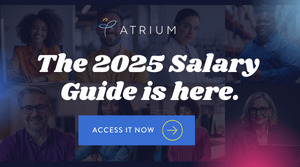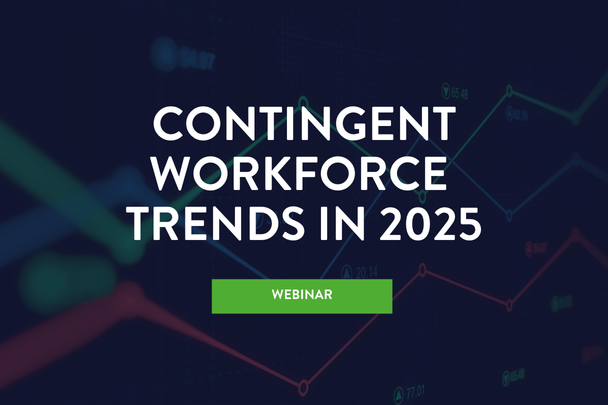Atrium’s President of Staffing, Adam Samples, recently collaborated with Bryan Berthold, Global Lead, Workplace Experience at Cushman & Wakefield and Ian Ferguson, Chief Operating Officer at Hayday/PINATA. Together, survey results aggregated from over 4 million data points across the globe were analyzed. Illustrating the relevance of these outcomes, the collaborators shared the challenges and motivators at work today. Through their own personal experiences, Adam, Ian and Bryan not only helped us understand where we stand today, but also what that means for the work that lies ahead.
For many businesses, there is more work and fewer resources, so productivity is top of mind. And, the newly remote workforce, from both an employee and employer perspective, feels more disconnected from brand culture than ever. Despite the benefits of operational efficiency and cost savings of virtual environments, leaders are seeking more tangible management and oversight of their staff. Many find it challenging to coach from a distance.
Key Findings
So, when it comes to an ideal work experience, what’s the relationship between brand culture and productivity? Is there a measurable outcome we should be seeking? Here is what we’ve learned from our collaborative discussion.
1. Productivity:
People are able to work remotely to successfully maintain productivity.
There is a conflict between the work experience employees desire and the management challenges employers face. Managers want more oversight and defined working hours while the majority of staff tend to want flexibility and endless freedom. The analysis clearly indicates we’re maintaining productivity and even increasing collaboration effectively at home. So, the lack of trust from leadership may indicate need for change management. We are integrating our personal lives into our work lives. That’s a change for a large number of people. And change can be a good thing.
2. Engagement:
While collaboration is on the rise, employees and employers feel disconnected from corporate culture and learning and development is lacking.
It’s true that an office setting offers community that is difficult to emulate in a virtual environment. And, a caveat to remote work is that many have reported feeling disconnected from brand culture. But a physical workspace has its drawbacks as well. According to some managers, socializing too much at work impedes productivity which we’ve just learned has been maintained within our remote environment. Virtual alternatives may not be able to fully replace human connection, but they are helping us fill a big void at a safe distance.
3. Younger Generations:
Millennials are struggling due to home environments including factors such as roommates, small spaces, children and other care giving responsibilities.
Employers passionate about brand experience and culture need to be sensitive to motivators. It’s not a one-size-fits-all. And, millennials are projected to comprise 75% of the workforce by 2025. We certainly need to understand their motivators. It’s something organizations need to pay attention to in order to attract and retain talent. The industries who are adapting to new needs are outperforming and out-recruiting those that are not.
4. Wellbeing:
People are finding it challenging to separate work from home responsibilities and aren’t “shutting down” at the end of the day or taking PTO and/or personal time away from work.
However, the figures also show us that younger employees are struggling to work from home successfully. They are struggling with time management, over-promising and burning out from lack of workplace structure including stop and start times. Mental health is a concern we should all be addressing at work. There is a lot going on in the world today. Leaders must be mindful of the stress and anxiety workers are experiencing.
Beyond health checks, we should be asking “How are you today?” It’s categorically about engaging people and caring for them in a way that offers community at work. And, there’s a healthy way for all of that to exist inside or outside of a physical workplace.
So where do we go from here? Our evolving experience is a direct result of the digital and physical integration of work. While technology development and constant optimization are at the forefront of our work revolution, they are not priorities for everyone. There is discomfort in change. But there is a lot of value to embracing new patterns.
The good news is that we are seeing swift adjustments being made thanks to heroic efforts from Human Resources professionals and other business leaders. The ability to not only do so, but to do so quickly, is vital to crisis management. We must assess the risks, make decisions and get to work. But, we must also be mindful of how it is impacting brand culture and each individual at work.











